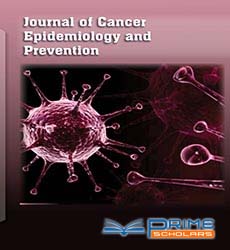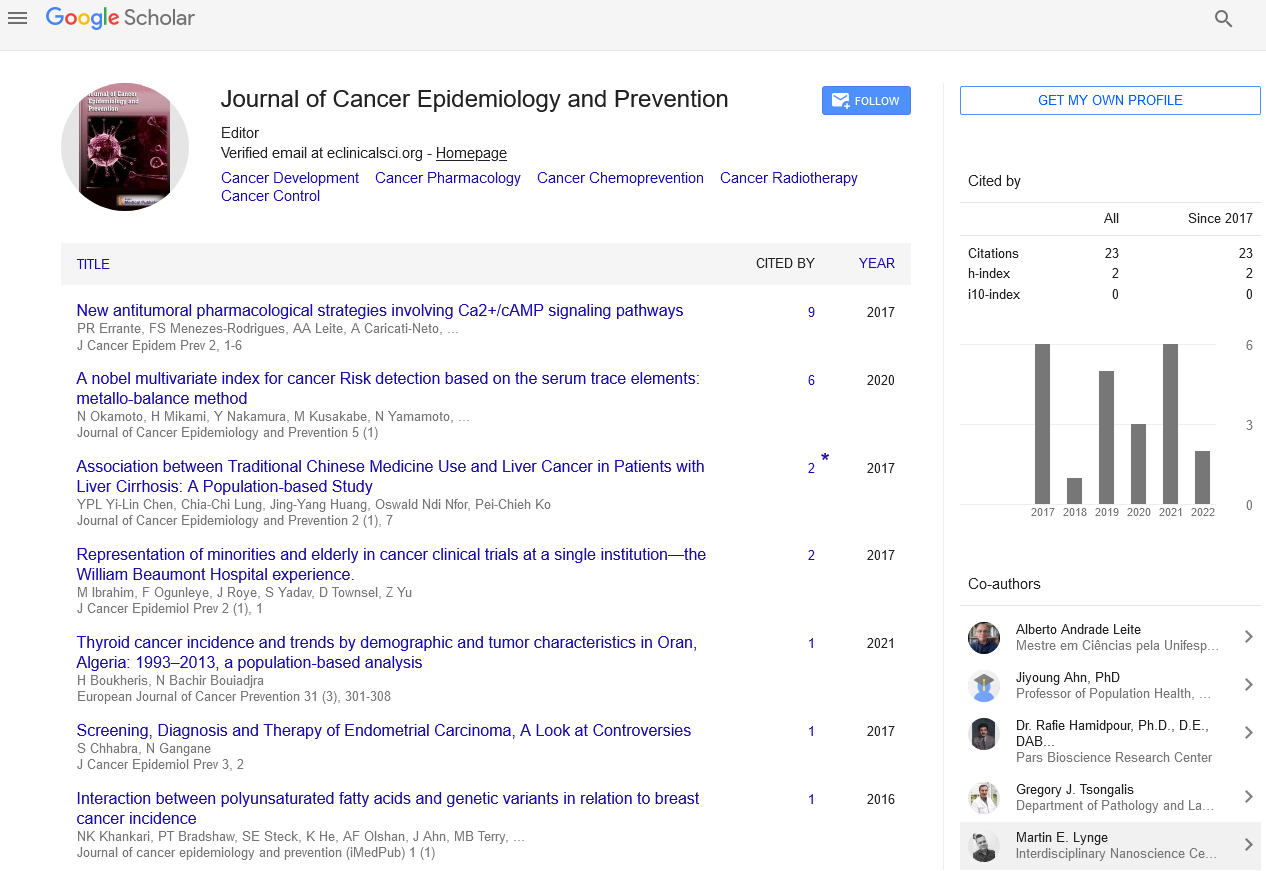Commentary - (2023) Volume 8, Issue 1
Incorporating Marine-based Cancer Drugs based on Pharmacology
Liang Tian*
Department of Radio Oncology, Peking University, China
*Correspondence:
Liang Tian,
Department of Radio Oncology, Peking University,
China,
Email:
Received: 31-Jan-2023, Manuscript No. IPJCEP-23-16268;
Editor assigned: 02-Feb-2023, Pre QC No. IPJCEP-23-16268 (PQ);
Reviewed: 16-Feb-2023, QC No. IPJCEP-23-16268;
Revised: 21-Feb-2023, Manuscript No. IPJCEP-23-16268 (R);
Published:
28-Feb-2023, DOI: 10.36648/IPJCEP.23.08.006
Description
Chemotherapy can be difficult to control because, at the wrong
dose, it can’t stop the growth and, at the wrong dose, the patient
can’t handle the side effects. The estimated body surface
area serves as the standard basis for the dosage of chemotherapy.
A 1916 study that attempted to translate medicinal doses
established in laboratory animals into comparable human
doses provided the basis for this formula. The concentrate just
included nine human members. At the point when it was first
presented during the 1950s, the BSA equation was acknowledged
as the authority standard for chemotherapy dosing without
any another option. The validity of this method for determining
uniform dosages has been discussed because the recipe
only takes into accounts the individual’s level and weight. Drug
assimilation and leeway are significantly impacted by age, sex,
digestion, illness, organ capacity, drug-to-tranquilize interactions,
hereditary characteristics, and weight. These factors also
have a significant impact on the actual grouping of the medication
in the individual’s circulatory system. Similar to this,
there is a significant vacillation in the primary chemotherapy
drug center among BSA-dosed patients, and this vacillation has
been demonstrated to be greater than multiple times for certain
medications. To put it another way, on the off chance that
two individuals take a similar measure of a medication, one individual’s
circulation system fixation might be multiple times
higher or lower than the other individual’s. This assortment,
which was displayed in a survey including 14 ordinary chemotherapy
drugs, is common of numerous prescriptions oversaw
by BSA. The term “applicant polymorphism search” refers to
the process of locating polymorphic DNA groupings within particular
characteristics that might make candidates for particular
characteristics. This approach aims to pinpoint a compound’s
pharmacokinetic or pharmacodynamic characteristics down
to a candidate polymorphism level in pharmacogenomics. You can use this kind of data to choose the best treatment options
for a patient. To fathom the likely practical effect of a polymorphic
DNA grouping, quality quieting can be utilized. Previously,
siRNAs were frequently used to suppress gene expression;
even more lately, anyway, they have been proposed for use in
research and the creation of therapeutics. Clustered Regularly
Interspaced Short Palindromic Repeats is a novel strategy. The
enzyme and CRISPR are the foundation of the technology. This
framework excels at quality quieting tasks because it can identify
and separate specific DNA groups.
Nearly every kind of solid tumor, including brain, breast, cervix,
larynx, liver, lung, pancreas, prostate, skin, stomach, uterus,
and soft tissue sarcomas, can be treated with radiation therapy.
Additionally, lymphoma and leukemia can be treated with
radiation therapy. The radiation portion to each still up in the
air by different elements, including the radio-sensitivity of every
sort of malignant growth and the presence of adjacent tissues
and organs that could be harmed by radiation. Radiation
therapy has its drawbacks, just like any other treatment. Because
it damages the salivary glands and reduces the amount
of saliva produced, radiation therapy can cause dry mouth. This
is interesting because the salivary organs will occasionally continue
to function normally after treatment. Radiation-related
dry mouth can be a problem for a long time. If the growth was
discovered in its early stages or in a weak area, radiation may
not be an option for treatment because it may damage organs
at successful portions.
Acknowledgement
None.
Conflict of Interest
The authors declare that they have no conflict of interest.
Citation: Tian L (2023) Incorporating Marine-based Cancer Drugs based on Pharmacology. J Cancer Epidemiol Prev. 8:006.
Copyright: © 2023 Tian L. This is an open-access article distributed under the terms of the Creative Commons Attribution License,
which permits unrestricted use, distribution, and reproduction in any medium, provided the original author and source are
credited.

